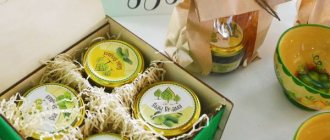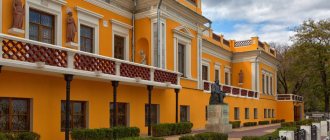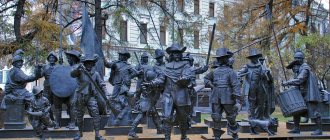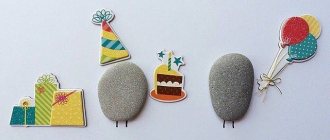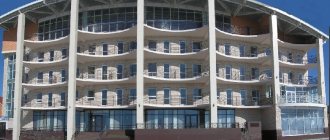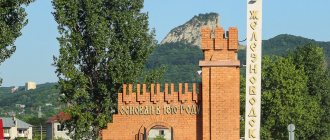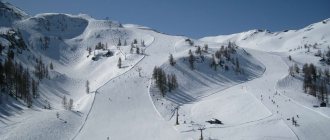Suzdal is perfect for a family weekend, and how could it be otherwise, since one of the unofficial symbols of the city is a lollipop in the shape of a cockerel on a stick. As in other cities of the Golden Ring, here you can introduce your child to Russian history, traditions and ancient crafts. Go for a walk around Suzdal to explore its architecture, culture and take part in excursions with your children.
City view. Photo: @suzdal
Suzdal Kremlin
The main attraction of the city is the Suzdal Kremlin, founded in the 10th century. During the excursion with children, you will be able to see the preserved buildings, including the majestic Nativity Cathedral. In addition, there are other interesting places here, for example, the Bishops' Chambers. During your visit you will be able to see the most ancient icons. With small children, be sure to visit the children's museum center, as well as the historical museum.
When is the best time to go?
Is it possible to divide the tourist season in Suzdal into high and low? Most likely no. The town with a population of 10 thousand people is not empty either in winter or in summer, welcoming tourists from different countries.
Especially many guests gather on festivals and holidays, when people come to Suzdal from neighboring cities and villages.
It is best to plan a vacation with a child in the summer: sightseeing involves long walks, and the summer weather is favorable for this. To travel with a baby to Suzdal, you can choose May or September.
No matter what time you plan your trip for, it’s worth finding accommodation in advance. It is especially difficult to find a free room or apartment on weekends or holidays.
The decision when it is best to go to Suzdal is also influenced by the weather forecast and the calendar of events. More about this.
Museum of Wooden Architecture and Peasant Life
Another interesting place to visit with children in Suzdal is the Museum of Wooden Architecture and Peasant Life. During the excursion, you will be able to show your children ancient houses and buildings, and also introduce them to the traditions of peasant life. The excursion is partially interactive, which means that you and your children can become a full-fledged hero of the event. After viewing all the exhibitions, you can look into the local workshop, where craftsmen make various products. If you wish, you can order a master class.
Welcome to Suzdal!
Suzdal is the soul and heart of the Golden Ring of Russia. In this city, every stone has witnessed centuries of history - the history of glorious victories and achievements of the Russian people, whose spirit has been preserved within the walls of Suzdal.
As in all cities of the Russian hinterland, a patriarchal way of life reigns in Suzdal. Walking around the city, it is unrealistic to see multi-story tall buildings: they simply are not built here. There is no shortage of things - narrow quiet streets, rickety wooden houses, from the chimneys of which flow grayish smoke from burning stoves, a huge number of churches and monasteries. Be sure to take a leisurely walk around Suzdal - residents of big cities have long forgotten what a walk is! Not a purposeful step that periodically turns into running, but a smooth, measured “foot by foot” walk. It is not customary to rush in Suzdal: yes, in fact, there is no need. The History itself, which every part of this beautiful city breathes, the atmosphere itself, filled with unhurriedness, creates a unique impression that time has stopped - take advantage of this, look around, slowly passing street after street!
Lovers of antiquity in all its manifestations will definitely be pleased with the Suzdal trade - you can taste real homemade mead or pickles from a barrel right on the winding street. And the youngest tourists will certainly appreciate homemade toys: can anyone in the class (or kindergarten group) boast of a carved wooden horse or luxurious beads?
The city of Suzdal is picturesquely located on the banks of the Kamenka River, along which an important trade route passed many years and centuries ago. The winding river meanders, its numerous bends are surprisingly harmonious and mysterious... You can see proud beautiful boats solemnly cutting through the surface of the water, and cunning merchants rub their hands in anticipation of a successful trade! Today Kamenka no longer brings overseas guests, but the frozen river brings sincere pleasure to children: it’s a pleasure to skate on smooth ice!
Shchurovo ancient settlement
A tour of the Shchurovo Settlement Museum is designed for secondary school children, when they already understand history and culture. There are several exhibitions on the gallery grounds. They clearly demonstrate the traditions and life of the Slavs. The interior of the interactive part of the complex was based on the scenery from the film “The Tsar”. It is best to visit the museum as part of an excursion, then you can learn a lot of interesting things about Ancient Rus'.
Weather and climate
The temperate climate of Suzdal is what you need for travel. Only winter weather may seem too cold for excursions, but the second half of spring, summer and early autumn delight with warmth and sun.
The best holiday in Suzdal with children is a summer holiday , when you can spend a lot of time walking. However, even on a summer trip you need to take warm clothes with you, since the temperature can fluctuate significantly.
Let's say, in the first half of June the temperature often drops to +8-12°C, and in the second half it sometimes rises to +24-28°C.
In July-August the temperature can vary from +15°C to +30°C. It rains infrequently; there may be 4-5 rainy days a month.
The average temperature in September is +15°C. The beginning of autumn can be very warm or bring cold weather. At the end of the month the temperature does not rise above +8-12°C. In October it gets cold to +5-10°C, and in November frosts come and the first snow falls.
In December, the thermometer drops to -3-15°C, and this weather lasts until the end of February. Sometimes the city experiences bitter frosts down to -20-25°C.
The sky in winter is gloomy, it snows often - this only adds to the picturesqueness of the landscapes, but due to the high humidity and wind it is very cold to walk. This is why it is not advisable to travel to Suzdal in winter with an infant.
In March, the temperature finally moves into the positive range, and in April the air warms up to +5-12°C. You can already plan a vacation in Suzdal for May: the temperature rises to +10-20°C, there are more sunny days than cloudy ones, and the heat is not yet over.
Souvenirs from Suzdal
Mead, pottery, quilts and cucumber jam.
Mead
In Suzdal you should definitely buy mead. This is the main Suzdal souvenir.
There are two options: buy No Name mead (homemade) or produced by the Suzdal mead factory . The latter guarantee that the product has all the documents and meets the standards at least on paper. But homemade mead is much tastier.
Outdoor tents often have both types. Homemade is sold in bottles without labels with a decent layer of sediment at the bottom. I tried both. Homemade is better.
Mead of any production should be stored in the refrigerator for no more than a week . She has a very short shelf life.
The factory version is sold in almost every store.
Mead tasting
The tasting room is located on the back side of the Trading Rows (the one facing the river). Look for the sign " Count Suvorov".
Another tasting room is located across from the Market Square. You need to cross Lenin Street at the intersection with Kremlin Street and go deeper along Torgovaya Ploshchad Street. You'll see there.
Ceramics
Another souvenir from Suzdal is a handmade clay pot.
To do this, you need to go to the Dymov-Ceramics workshop. It's on the outskirts on the Vladimir side. They will sit you at the pottery wheel, show you everything and tell you everything. The process is interesting. Children will also like it - we tried it, we know.
But there's a catch with ceramics. You won’t be able to immediately take back what you’ve got - the clay is raw. The product must be dried slowly, otherwise it will crack. You can ask to be burned after it dries.
To get a pot you will have to go either back to Suzdal or to a store in Moscow at VDNKh. You can also pick it up in Vladimir, Ivanovo and other cities, but you will have to negotiate. This process is not streamlined: they will either forget about you, or lose the pot, or something else. In any case, the process itself is very interesting, and you can buy a souvenir ready-made.
About cucumber jam
Jam can be made from anything, even from a railroad tie.
Here, too, someone decided to distinguish himself: he cooked it from cucumbers. You can try it at the Ogurets restaurant. It’s not cheap there, they bring it in a small plate, but it’s enough. You can't eat a lot of it, but it's worth trying once.
Cucumber jam is also sold on the street. On Cucumber Day you will definitely find it.
Results
Suzdal is one of the brightest and most memorable points on the tourist route through the cities of the Golden Ring of Russia. It is rarely allocated more than 1-2 days for excursions. There are so many architectural monuments and museums in this town that it would be impossible to get around them even in a week.
Suzdal is a great place for weekend tours, visiting fairs and festivals, and holidays. The town has many attractions with a rich history that will be of interest to older students, and for younger children, walks around the beautiful city and children's entertainment are perfect.
Suzdal
When preparing for my trip to Suzdal, I didn’t find too many reviews about similar trips with children, so I decided to write about our trip anyway, although it was of the “I don’t want to remember” category.
Suzdal is a completely unique city that is certainly worth visiting. And with the child too. We were just unlucky with a car that broke down on the way there and had to be repaired, which took 2 of the 4 days of our trip. As a result, a lot of nerves, money and precious time were wasted, which was spent not on visiting monasteries and churches, but on a “tour” of car services. However, Alyosha was not so upset by this last fact.
So, below, everything useful from our experience of the trip to Suzdal.
The journey by car, no matter how you try to “deceive” the traffic jams, takes at least 3.5 hours from Moscow to Vladimir and at least 40 minutes from Vladimir to Suzdal. We didn’t come across any places along the way where it would be comfortable to walk with a child, eat, change clothes on the way to Vladimir; we used the tourist complex “Russian Village” as a “transfer point” (located at the entrance to Vladimir: Moskovskoe sh., 5a): convenient , if you don’t plan to visit Vladimir, there is a small fenced, organized area where it’s nice and safe to walk, the Okolitsa tavern, where you can have a tasty snack and go to the toilet.
In Suzdal we stayed at the Sokol Hotel (2 Torgovaya Square): the location is excellent, the conditions are good, the service is Russian.
It is believed that when coming to Suzdal, you must visit (minimum program):
1. Suzdal Kremlin (Kremlevskaya str., 20, Opening hours: 10.00 - 18.00, except Tuesdays and the last Friday of the month)
The Kremlin Museum with a large number of exhibitions. We only walked around the territory, walking along the fortress moat.
Before reaching the Kremlin, you can look into the Masters' Compound. During the season, you can mint your own coins there and get acquainted with other types of crafts. We were at the moment when all this was closed. There is also a children's playground, several souvenir shops, and a tea room. And opposite, on the other side of the street, is the fire station. We were lucky to see fire trucks coming out of it with sirens blaring. This has nothing to do with historical sights, but the boys’ mothers will understand why I wrote about it 
2. Museum of Wooden Architecture (Pushkarskaya St., Opening hours: 9.00 - 17.00, except Wednesdays and the last Friday of the month, entrance for an adult 200 rubles (price includes photo and video shooting, visit to all exhibitions)).
In my opinion, the most interesting place for a child, you can walk for a long time. However, Alyosha was most interested in the snow that had not yet melted (apparently, over the long months of winter, he got so used to it that now he couldn’t live without it :)).
There is a very small playground; geese, cats, and dogs walk around the area.
During our visit on the street, an absolutely wonderful grandfather gave a lesson in weaving from birch bark and wicker (for free), told a lot of interesting things about bast shoes and other items of village life. Older children could try weaving themselves. You could also buy a birch bark souvenir from him. Nearby, a woman played homemade whistles.
It’s interesting in hut-museums; the caretakers are very willing to answer any question, but you can’t touch anything. It’s difficult to explain this to a two-year-old child. Well at least they let me in the doghouse 
3. Spaso-Evfimievsky Monastery (Lenin St., Opening hours: 10.00 - 18.00, except Mondays and the last Thursday of the month, bell ringing: 10.30, 12.30, 13.30, 15.00, 16.30)
Monastery-museum. There is a children's playground on site and a pancake bar in the warmer months.
We didn't get there 
4. More interesting things:
Master class on blacksmithing (Suzdal Art and Restoration School, Lenina St., 106, tel. (49231)2-12-09)
Pottery workshop: excursion and lessons on the pottery wheel (Suzdal district, Ivanovskoye village, Solnechnaya st., 7, tel. (49231) 2-43-66, (905) 6117185)
Neither one nor the other visited, if you are going, be sure to call to check opening hours, etc.
Sunsets - there are no tall buildings in Suzdal (except for bell towers), which means it is very pleasant to watch the sunset - the child was very impressed.
The Eternal Flame (in the park opposite the Trading Rows) is nothing special (we didn’t plan to visit, we just passed by), but the child really, really liked it.
5. Other information
It is recommended (we didn’t take it, I can’t evaluate it) to buy mead in the tasting room of the Suzdal mead factory (located in the Trade Rows on the Trade Square).
There are restaurants, cafes, taverns and other places where you can eat at every step, but prices are almost everywhere in Moscow. For more information about accommodation, where to eat, what to see, how to get there, reviews from tourists, see here: https://autotravel.ru/excite.php/28/3
More information about the sights, as well as maps here: https://suzdal.org.ru/architect.htm
Overall, our trip turned out to be nervous, but still not so useless. It is simply necessary to leave Moscow from time to time - even spring outside the big city feels completely different.
PS: I thought I would also make bells and bell ringing the theme of the trip. Firstly, because telling a child about the spiritual, cultural and historical value of ancient architectural monuments is somehow difficult, but walking past and not saying anything at all is somehow wrong. And secondly, you still need to play something in the evening, entertain yourself with something along the way, etc. And bells and their ringing are something that always attracts a child’s attention and something that can be talked about in an interesting and accessible way. I accomplished almost nothing of my plans; there was no time for that. Find a lot of interesting ideas and information on this topic here.
Stromynka Street
An important monument to the history of Suzdal is Stromynka Street, or Stromynskaya Road - the oldest route that in the times of Ancient Rus' connected Moscow, Suzdal and Vladimir.
This road was built about 1000 years ago, when Moscow did not even exist yet. Prince Vladimir Monomakh traveled along this route from Kyiv to Rostov (this fact is mentioned in the “Instruction” for 1017). The road got its name in the 13th century thanks to the village of Stromyn, through which it passed.
The road lost its importance after the construction of the Vladimir Route at the beginning of the 16th century. Stromynka Street in Suzdal today follows the direction of the ancient Stromynskaya road. By the way, a street with the same name exists in the capital.
How to get to Suzdal?
Unfortunately, you cannot get to Suzdal by train. The city is connected to the rest of the “world” only by bus.
The most economical way to get from the capital to Suzdal is as follows. First you need to take the train at Kursky Station and get to Vladimir. There you should change to a bus going directly to Suzdal. These buses depart from the railway station in Vladimir every 30-40 minutes. In another 45 minutes you will already be in the ancient town of Opole.
There are also direct bus services from Moscow to Suzdal (departing from the Shchelkovo bus station). However, their schedule should be checked at the box office.
Lazarus Church
What to see in Suzdal, besides the Kremlin? It is impossible to ignore other temples of this historical city. At least three dozen churches have survived in Suzdal. And one of the most beautiful is the Church of St. Lazarus, dating back to 1667. Perhaps, in terms of originality and splendor of decor, it has no equal in all of Suzdal! And the bell tower of the Lazarevsky Church can be called the most recognizable in the entire district.
The masterpiece of white stone architecture has five domes, and the cornice of the church is decorated with a belt of tiles. By the way, this technique of decorating Orthodox churches was first used here. Three low apses are attached to the church on the eastern side.
Shopping arcades
What else to see in Suzdal? After visiting the Kremlin and numerous temples of the city, you can move on to inspecting civil architectural monuments.
A unique structure adorns the Trade Square in Suzdal. These are the so-called Trading Rows - the first building in the Empire style in the city. It was built at the beginning of the 19th century according to the design of the architect Alexei Vershinsky. In the center of the Trade Rows there is a portal entrance gate, which is topped with a high gilded spire with a falcon figure at the top.
At one time there were at least a hundred merchant shops here, which were later rebuilt into shops. Nowadays, tourists love to stroll through the long arched galleries of this majestic structure.
Things to do
Although there are no typical amusement parks in Suzdal, families with children will never be bored due to the unusual local entertainment. In the summer, city guests are greeted by a large fair, where they hold pillow fights, compete in tug-of-war, and are treated to unusually prepared cucumbers - boiled, stuffed, baked and raw. Yes, all these fun things are happening to celebrate Cucumber Day.
Various festivals are often held in Suzdal. The brightest of them in winter occur during the celebration of Christmas, Maslenitsa and dog sled races. In the summer months, you can plan a trip to the bast festival, patchwork festival, or ax festival. In the fall, the historical festival “Suzdal-grad” is usually held in Suzdal and City Day is celebrated in September.
Even on an ordinary summer day, it’s nice to stroll around the town, looking at architectural monuments, go to one of the playgrounds and take a ride along the river. Kamenka on a river bus, seeing the sights from a different angle. In winter, the city enjoys sledding and skiing.
Children of any age will be interested in visiting the “Shchurovoe Settlement” - a wooden fortress-set for the film “The Tsar” by P. Lungin. Now it has turned into an interactive museum dedicated to ancient Russian culture.
Suzdal is a city with a thousand-year history
This village was first mentioned back in 1024 in Nestor’s famous work “The Tale of Bygone Years.” The name most likely comes from the Old Church Slavonic word “sezdati”, which means “to sculpt from clay”.
Suzdal has a complex and eventful history. The city was destroyed several times (by the Volga Bulgars, Mongol-Tatars, Poles, Crimean Tatars), and in the middle of the 17th century, half of its population was wiped out by the plague. At the beginning of the 18th century, Suzdal experienced an economic boom, but from the mid-19th century it gradually turned into a typical provincial town (due to the fact that the railway bypassed the settlement).
The Soviet government initially began to destroy the churches of Suzdal (a total of 15 churches were destroyed), but then came to their senses. In the 60s, a large museum and tourist complex was created here, and work began on the restoration of architectural monuments. Today Suzdal is a city that lives solely on tourism and tourism infrastructure.
What to see in Suzdal in 1 day? Of course, any local resident will tell you that one day is not enough for this. And this is absolutely true, even despite the fact that all the interesting objects here are located compactly. But in our article we will still try to answer this question and make a list of attractions that you need to visit first.
